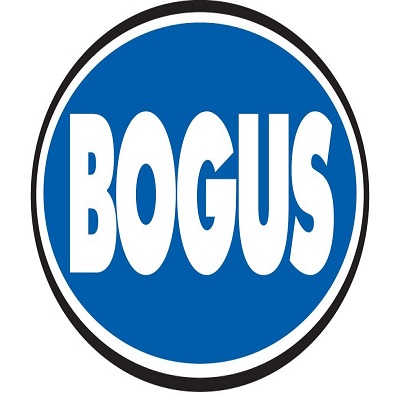Styrian Lift Co’s Are Ready For The Season

Exercise in the great outdoors, high guest satisfaction, great awareness of sustainability: the 2023/24 ski season starts under good auspices for the Styrian ski areas and cable car companies. The enthusiasm for skiing is unbroken - and cable cars and lifts are seen as a safe economic (electric) engine for winter tourism. This year over 55 million euros will be invested in the ski areas.
Up the mountain and into the snow-white natural fun: skiing and snowboarding are part of the winter program for almost two thirds of Austrians. If you look at the current figures from a market study by Manova, it becomes clear at first glance: the massive Corona dent was followed by two significantly better years for ski tourism. There were 50.3 million first accesses (“Skier Days”) in Austria last season – 54.3 million was the highest before Corona. “The trend is upwards again, we are still ten percent short of the top winter of 2018/19 and we are on the right track,” confirms Fabrice Girardoni, chairman of the Styrian cable car companies in the WKO Styria.
Guests are very satisfied, new blood is there
Surveys among winter sports guests in Styria and Austria - Manova surveys around 40,000 guests every year - show how satisfied they are with the offer. 80 percent are regular guests - they come back to their local ski areas again and again because they are completely satisfied. The piste conditions and especially the snow reliability have dominated the choice of ski areas for 20 years. "That's why snowmaking is a central point of our offer," emphasizes Girardoni, "because it ensures the snow guarantee and the consistently high quality of the slopes." The young generation is also an important aspect. The skiing population is generally younger than the average population, and enthusiasm for skiing continues. “Smaller ski areas play an important role here,” says Girardoni.
"We are the electric express trains up the mountain"
Sustainability and energy self-sufficiency are also top topics in Styrian ski areas. Cable cars are often branded as "power guzzlers" - something that Oliver Käfer, managing director of the Styrian cable cars, cannot understand: "Everyone talks about electric cars as a climate-saving alternative in road transport. But we have long been electrified with both the cable cars and the snow systems and therefore one step ahead! The proportion of energy required for cable cars and snow facilities is comparatively low compared to the number of people we enable to have a winter holiday." According to a study by the Federal Environment Agency, tourism accounts for a total of 1.55 percent of energy consumption in Austria (average 2017 - 2019). Only 0.9 percent falls on total winter tourism and 0. 3 percent on the ski areas. A total of over 55 million euros will be invested in the infrastructure of the ski areas this year in order to sustainably ensure the quality of the offering. The three largest investments are in the Loser with the Panoramabahn, the Planai with the Dachstein mountain station and the 10-seater Rohrmoos gondola and the Turracher Höhe with the Wildkopfbahn.
Recovery after Corona
As the current survey figures from Manova show, the situation has eased again: the number of guests is rising sharply again, but the pre-pandemic level has not yet been reached. The Styrian ski areas recorded 3.7 million first-time entries in the 2022/2023 season, of which 2.4 million were overnight guests and 0.9 million were day guests. 0.4 million came as seasonal guests. When it comes to spending, day guests spent less compared to the pre-Corona years, while “heavy users” did not change their spending behavior. An average guest spends around 212 euros per day. This triggers a value chain that extends to the catering industry, suppliers, etc., totaling 400 million euros in direct and indirect added value.
Follow-up report from the 2023 cable car conference: Confident, innovative, sustainable:
Styrian ski areas are starting the new season well prepared
In bright late summer weather, the Styrian cable car companies started the 2023/24 ski season on September 29th in the Latschenhütte on the Teichalm 2023. Around 130 guests attended the conference. There were exciting lectures about the latest innovations from the industry and a touching keynote speech by Super-G world champion Nicole Schmidhofer.
Visiting the cradle of the passion for skiing: This is how you could describe the location of the cable car conference on the Teichalm. Because it is often the small ski areas where the first turns are made and where lifelong enthusiasm for skiing begins. “The skiing population is younger than average,” emphasized Fabrice Girardoni, chairman of the Styrian cable cars in the WKO Styria, during the welcome. And enthusiasm for the snow remains high: “Since 2013, we have been conducting surveys among guests across Austria, which show that around 80% are 'satisfied' or 'very satisfied' with the price-performance ratio they experienced.”
The managing directors of the local operators emphasized the importance of the “little ones”: “We are the ski kindergarten,” said Wolfgang Wiltschnigg, CEO of the Holzmeisterlift, “his” summer alm. JosefnKletzenbauer, Managing Director Teichalmlifte, added: “We are small and non-alpine and have specialized in families with children.” Markus Wagner, Managing Director Pirstingerkogel-Lift, also pointed out the importance of snowmaking: Quality assurance would no longer be possible at lower altitudes without snowmaking system.
“Thank you!” from the world champion
A very big and emotional “thank you” for the work of the cable car operators and ski areas was given by Nicole Schmidhofer, former downhill World Cup winner and Super-G world champion, who gave touching insights into her career in her keynote, including her serious fall and her years-long medical battle for one Getting back into the sport that meant her whole life. “You can pat yourselves on the back,” she addressed the cable car companies, “because of you, Austria is doing so well in skiing.” She particularly mentioned the smaller ski areas – that’s where children, like her, are starting out for the first time stand on the boards.
Well recovered after Corona
The Styrian ski areas recorded 3.7 million first-time entries in the 2022/23 season, according to the latest figures from the market research institute Manova. 2.4 million were overnight guests, 0.9 million day guests and 0.4 million seasonal guests. This means that the pre-Corona level has almost been reached. Daniel Berchthaller, CEO of dernReiteralm, also confirmed the good recovery after the pandemic: “The season has normalized,” he said, with “good occupancy” brought by guests from Austria, Germany, Slovakia and the Czech Republic in particular. Georg Bliem, Managing Director of Planai-Hochwurzen-Bahnen, spoke of a “surprisingly good recovery”: “We are well on track and show the courage to innovate.” Christian Fasching, who took over the Planneralmn from his parents-in-law in the midst of the Corona aftermath, was also in a good mood :
Climate change: more summer, less snow
A major challenge for the Styrian ski areas is climate change. It's getting warmer and there's less snow. Investments in innovative and sustainable technologies are therefore the order of the day. “We are more sustainable than is publicly perceived,” said DanielnBerchthaller from Reiteralm. “We buy 100% green electricity.” Georg Bliem reported on “climate change that is visible everywhere on the Dachstein” and said: “I am confident about the next decades with innovative snowmaking technology, but you have to be careful – and always be up to date with the latest technology!” The Summer operations are becoming increasingly important for many ski areas. At the Reiteralm, for example, the focus is increasingly on hiking and mountain biking. On the Planai, 20% of sales already come from summer business.
Innovation, experience & high-tech
In order to brand ski areas as “holistic adventure locations”, many providers rely on additional delicacies, such as individual (children’s) play facilities made of wood. In his keynote speech, Wolfgang Wild, CEO of Almholz, gave insights into the work involved in the design and production of playgrounds and slide systems made of larch wood. The “Almpark Teichalm”, the “Hopsiland” on the Planai and the “Dachsteingondel” with a slide come from his plane. High-tech is also playing an increasingly important role in cable car operations. Jari Hoeck from Doppelmayr gave surprising and exciting insights and perspectives into the world of artificial intelligence. When it comes to safety, maintenance and efficiency, fully automated cable car systems could soon set the tone, says the expert. In such high-tech lifts and cableways, the staff sits in a control center and monitors what is happening at the staff-free stations via screens. Sensors count the guests and stop automatically if a skier falls while getting in or out. “This allows capacities to be optimized and costs to be minimized,” says the expert.
Skiing is important to guests even in times of high inflation
On average, a guest in Styria spends 212 euros on a day of skiing. The most recent surveys have shown that, due to inflation, savings were made on accommodation and food, but not on skiing itself. “It looks as if it will continue to be the case: people want to ski and, if necessary, look for ways to save,” says Manova managing director Klaus Grabler. The value chain reaction that originates from the cable car companies will therefore remain intact for the 2023/24 season.













